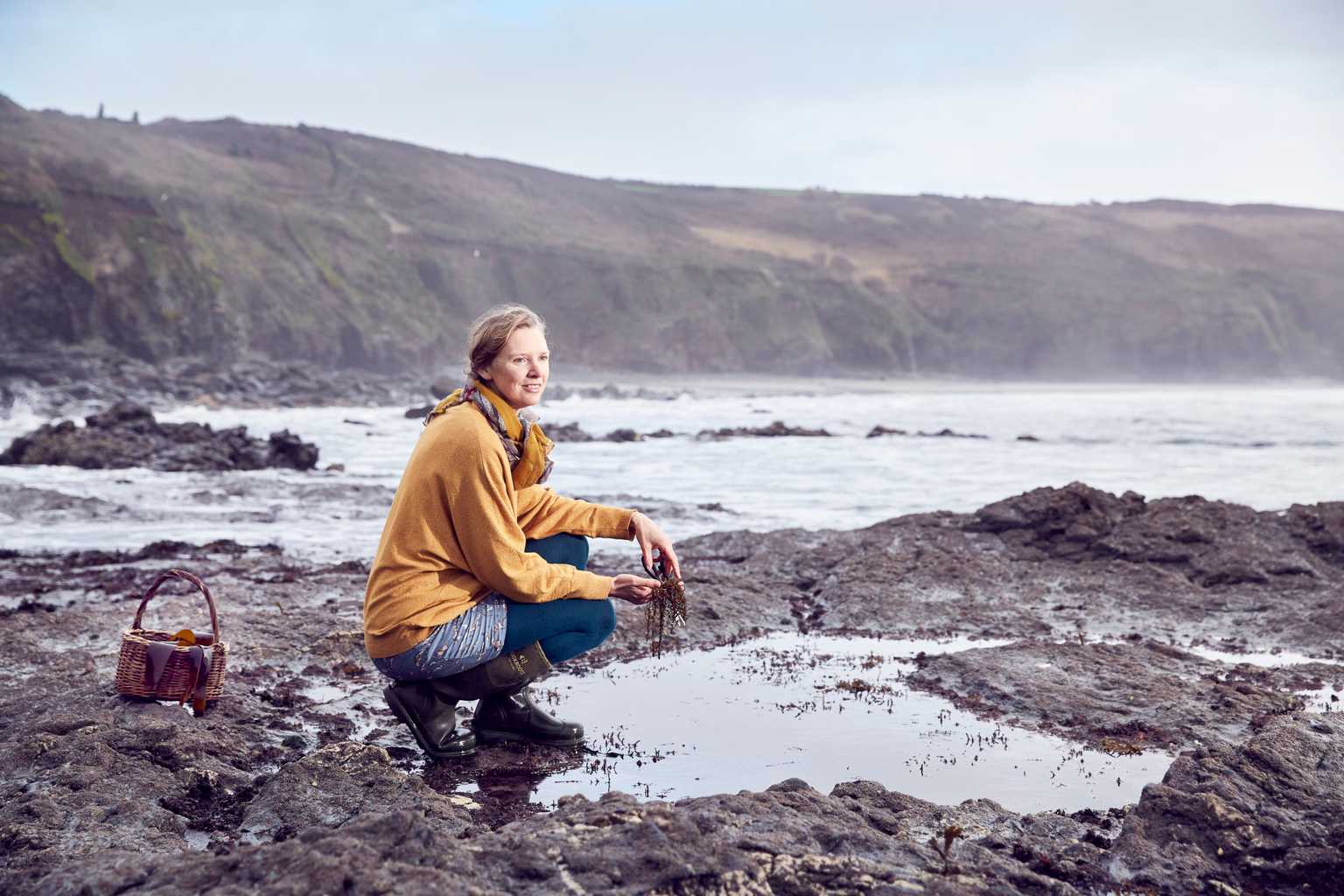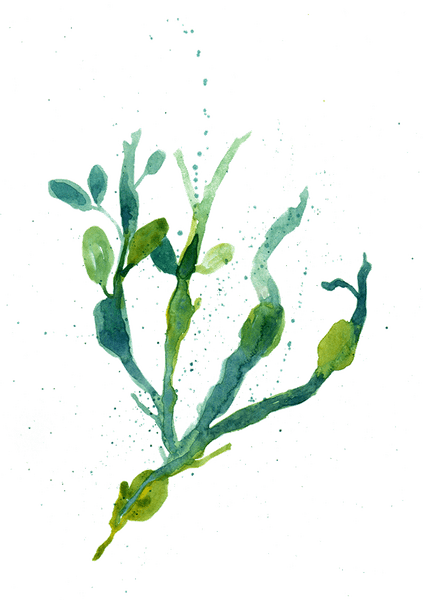
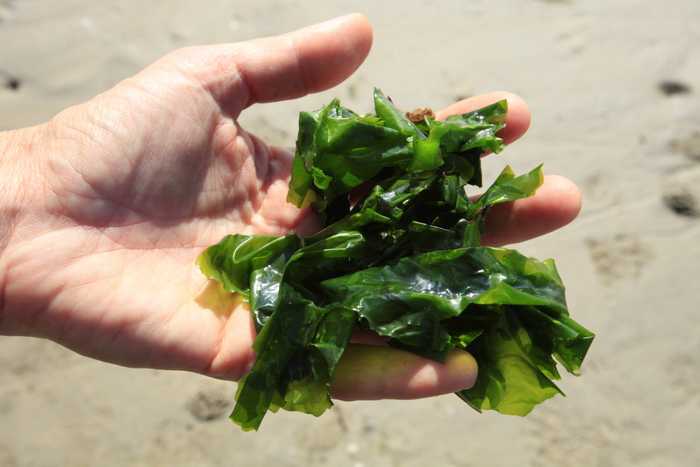
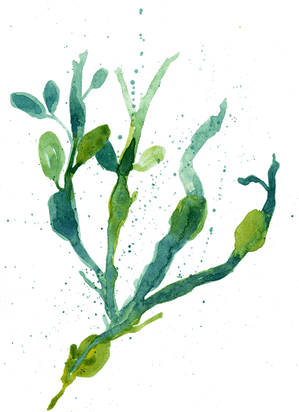
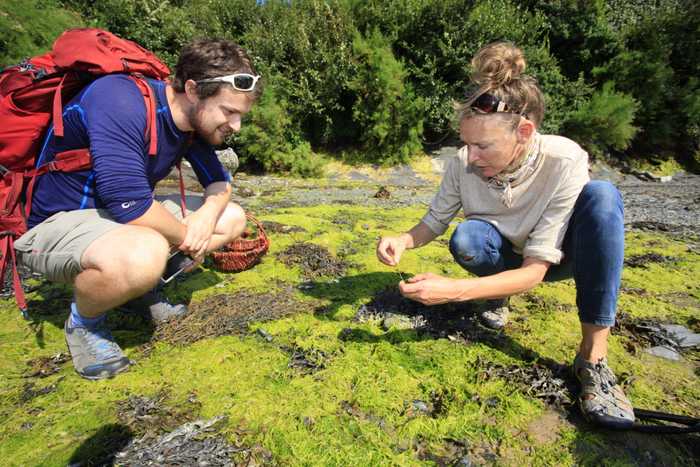
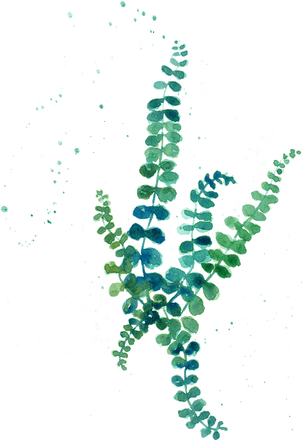
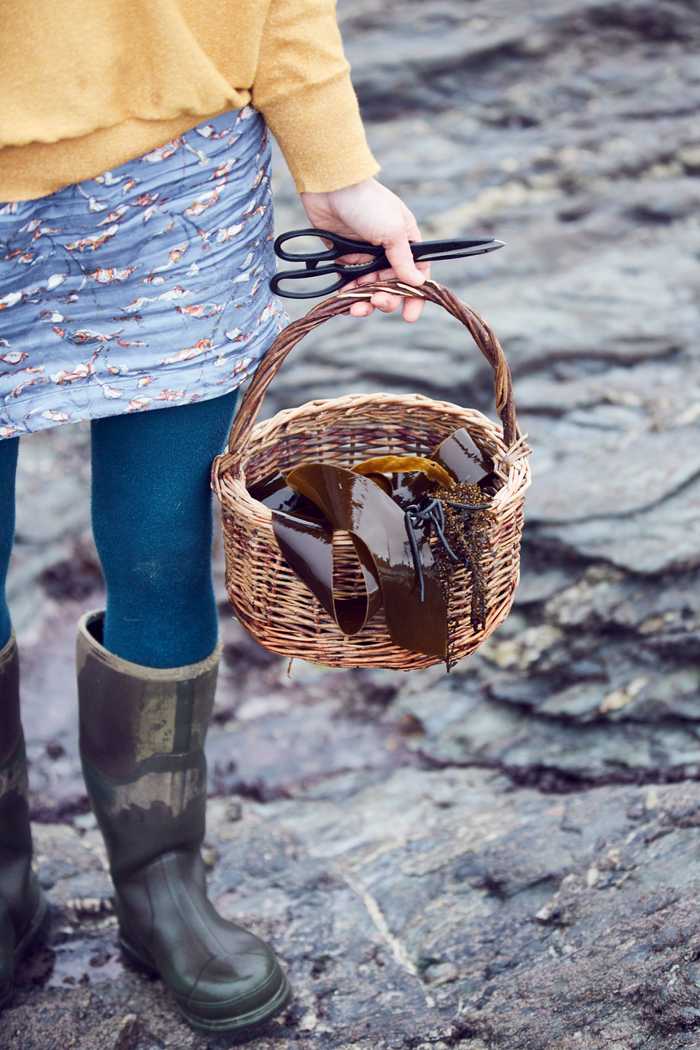
At Cornish Holiday Cottages we are always on the lookout for unique ways to spend time in the Falmouth and Helford area throughout the seasons and it’s even more exciting when we find environmentally-friendly experiences that encourage us to connect with nature and learn more about Cornwall.
It was a delightful surprise, therefore, to stumble upon the local seaweed workshops run by forager, author and guide, Rachel Lambert. On her wonderful foraging courses, she not only introduces attendees to a huge variety of edible plants and marine algae (while teaching the best way to sustainably harvest them) but she encourages creativity in the kitchen through her eye-opening seaweed recipe ideas.
Seaweed grows in abundance in Cornwall, where over 400 different species can be found here and in the Isles of Scilly, out of the UK’s 600.
The Helford and Falmouth area is particularly rich in variety, with its combination of tidal creeks, estuaries, rockpools and coastline. The estuary of the Helford, that connects the land and sea, carries degrees of salinity and here you will find edible plants, marine algae and mollusks that can either thrive in the sea, in fresh water or in areas in between the two. This makes it the ideal place for Rachel to base some of her most popular workshops.
We spoke with Rachel and asked her a few questions, to find out more about her connection to her practice, nature and the local area.
It’s wonderful to meet you Rachel! We wanted to start this chat by setting the scene, so could you please describe the Helford as though you are speaking to someone who is yet to visit?
All along the River Helford is surrounded by a beautiful and diverse landscape. It has a main estuary which looks like a road coming off of the ocean, lots of lovely winding creeks which are a joy to walk along, and a mixture of field and hedgerow, which lead down to coastal areas. The area is a real mixture of scenery, and while there are definitely popular spots frequented by tourists, you can also easily find quiet off-piste places that, once located, make you feel as though you’re in another world entirely.
This is a wonderful way to describe our local area! We also love walking beside the creek, and finding hidden places to sit and be a part of the timeless landscape. Now you’ve painted a lovely picture of the area, we’d love to know more about how you were first introduced to foraging?
Looking back, I would say that my very first foraging encounter came from joyful blackberry picking in the woods and Cornish heaths as a child. But it wasn’t until years later, when visiting my friends Mandy and Martin in Devon, that my eyes properly opened to the concept of wild food. While on a walk, their throwaway comment about Pennywort (which was growing snugly on a wall) being edible changed my world forever. I thought, oh my goodness I am surrounded by food and medicine, and in that moment I started seeing my environment in a new light.
And what was it that made you certain this is what you wanted to do for a living?
Nature is so wonderful and it’s such a lovely thing to study a plant. At the beginning of my journey I started learning only as a personal interest. I got to the point when I had a career break and wanted to go back to being an artist, but by this point I knew I’d learned a lot about wild food and wanted to share my knowledge with others. I think that my background as an artist, and my experience working in community and with nutrition, lent itself naturally to identifying different seaweeds, teaching others, and creating inventive recipes. I’ve always taught, so for me, sharing is a natural and rewarding thing to do and my creativity was redirected to the kitchen.
It certainly sounds as though you found your calling here in Cornwall. You speak in volume about how going out into nature can also help you find your human nature within. What are your favourite ways to connect with nature in Cornwall?
Despite running many of my foraging workshops in Falmouth, Helford and south Cornwall, I actually live in Penzance in the west. My home is close to the sea, and from my top floor you can glimpse the ocean. Downstairs I leave the ivy to grow outside of my windows so that I can watch the birds fly to and fro, and I’ve even painted a magnolia mural on my wall so I feel connected to the outside all year-round.
I often walk down to the sea for a wild swim by Battery Rocks or to a closer private place for a quick dip. Although busy life doesn’t always allow for it, I really love having time to feel immersed in nature. When I lived in London and visited Cornwall, it used to take me a few days to feel at one with the environment; a part of things rather than an observer.
And another way I connect with nature is by eating it of course!
Of course! And we can relate entirely with wild swimming; we’re big fans of going for after-work swims at Grebe and in the Helford River. Is there anything in particular that makes Helford River a choice location for your seaweed foraging workshops?
The Helford River is far less populated than other areas in Cornwall and there are stunning wild areas right on your doorstep. With seaweed, it’s all about finding places to access it at low tide and there are plenty of safe places you can do this by the Helford, although it can get very muddy! The estuary is a very interesting place to forage because you will find certain seaweeds here that can cope with different saline levels; some seaweeds won’t survive on the coast and estuaries and some won’t. Helford is also one of my chosen places to forage because on the south coast of Cornwall there’s less sources of pollution.
And what common seaweeds can we look out for locally?
One of the most common and stand-out seaweeds is sea lettuce, which can be found attached to rocks or in rock pools and is bright green, ruffled and translucent. When harvesting this, please be sure the seaweed is attached, and cut the upper two thirds, leaving the lower third intact. This plant will be larger before the end of summer and the Vitamin C will be higher too.
This is great advice thank you! Finally, could you tell us a bit more about what your seaweed workshops entail?
I start each workshop with a chat about safety and the reality of what’s happening to our seawater, our impact on our environment and how important it is to keep our seaweed in place, because they do so much for other mammals and sea creatures, and produce oxygen.
I will then explain the best way to harvest them, how to recognise them, when not to pick them, how much to take, how to dry them and ways in which you can use them.
We will then sit down and eat tasters that I’ll pre-make into delicious things such as seaweed hummus with seaweed crackers and seaweed meringue with wild nori and praline. I like to exemplify that seaweed’s aren’t limited to saltiness, their flavours vary along with their colours and textures.
Part of my approach revolves around helping people to understand the role of seaweed in our everyday lives, and the role of us in the life of seaweed.
